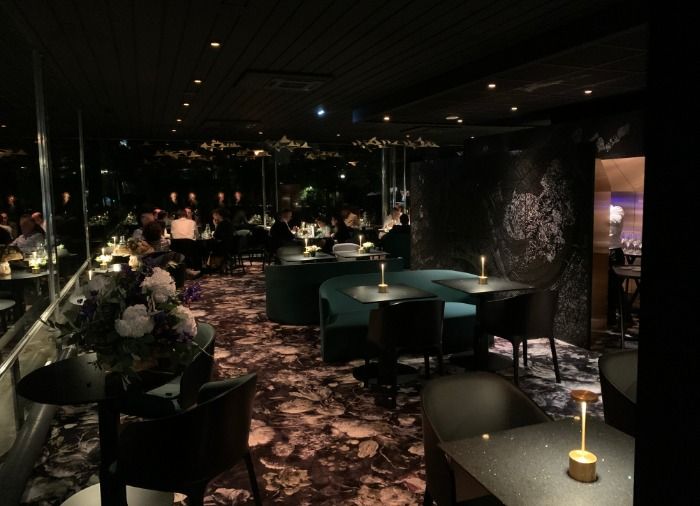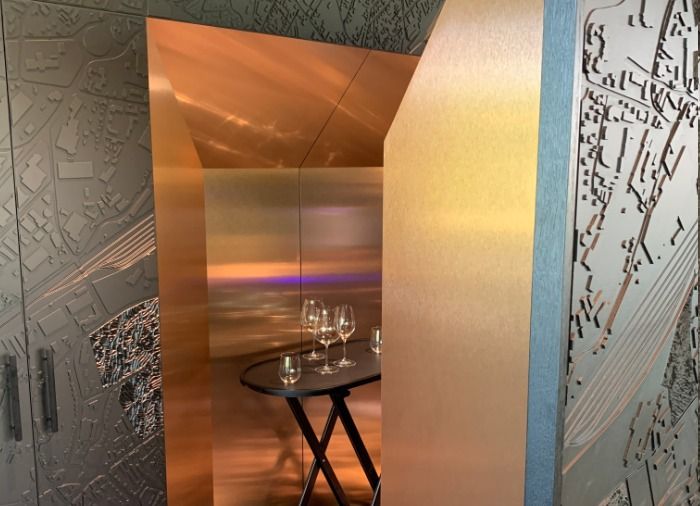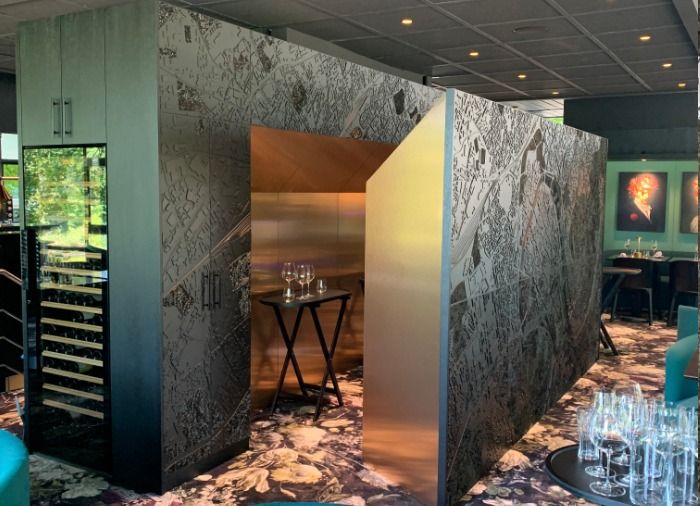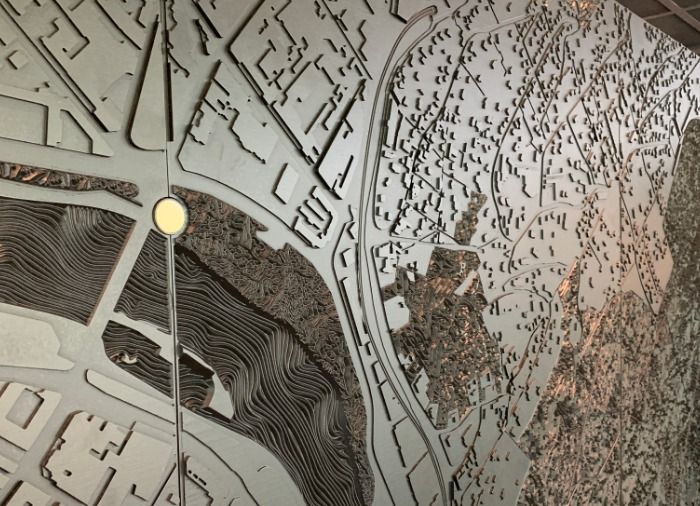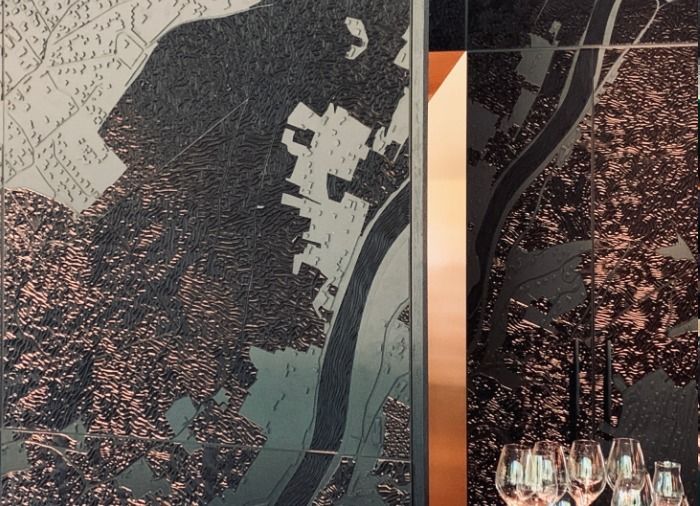Ibride develops gourmet restaurant Le Parc in Besançon
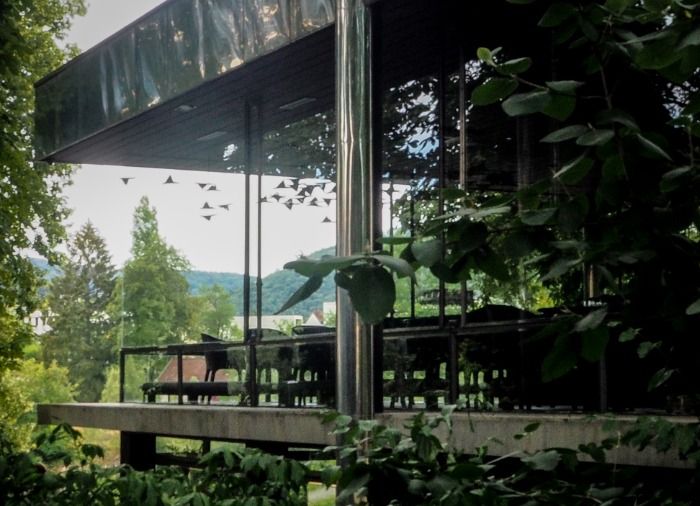
A horizontal plan, a flat roof and 4 glass walls that erase the boundaries, immerse the visitor in the Parc Micaud and suspend him among the century-old trees overlooking the river.
Created in 1969 by the architect Michel Demange for the city of Besançon, this pavilion is an archetype of modern architecture, a former tourist office now listed as a 20th century heritage site. This year, Ibride was entrusted with the fitting out of this exceptional restaurant, which comprises a kitchen on the second floor opening onto a dining room with 50 seats and a bar opening onto a waterfront terrace. The exceptional location, the immersion in the canopy and the original function of the site were all sources of inspiration for the creation of a space dedicated to the green city of Besançon.
To preserve the privacy of the room and the exclusivity of the restaurant, Benoit Convers designed a 13 metre long green marble wall on the street side, which acts as a barrier against the hustle and bustle of the square. Made of vertical slabs of Verias green marble from Greece, polished to resemble an open book, the wall creates a striking effect of symmetry along its entire length. Inspired by the 1929 Barcelona Pavilion designed by Mies Van der Rohe, it acts as a transition between the street and the hall, forcing visitors to walk along it to access the interior.
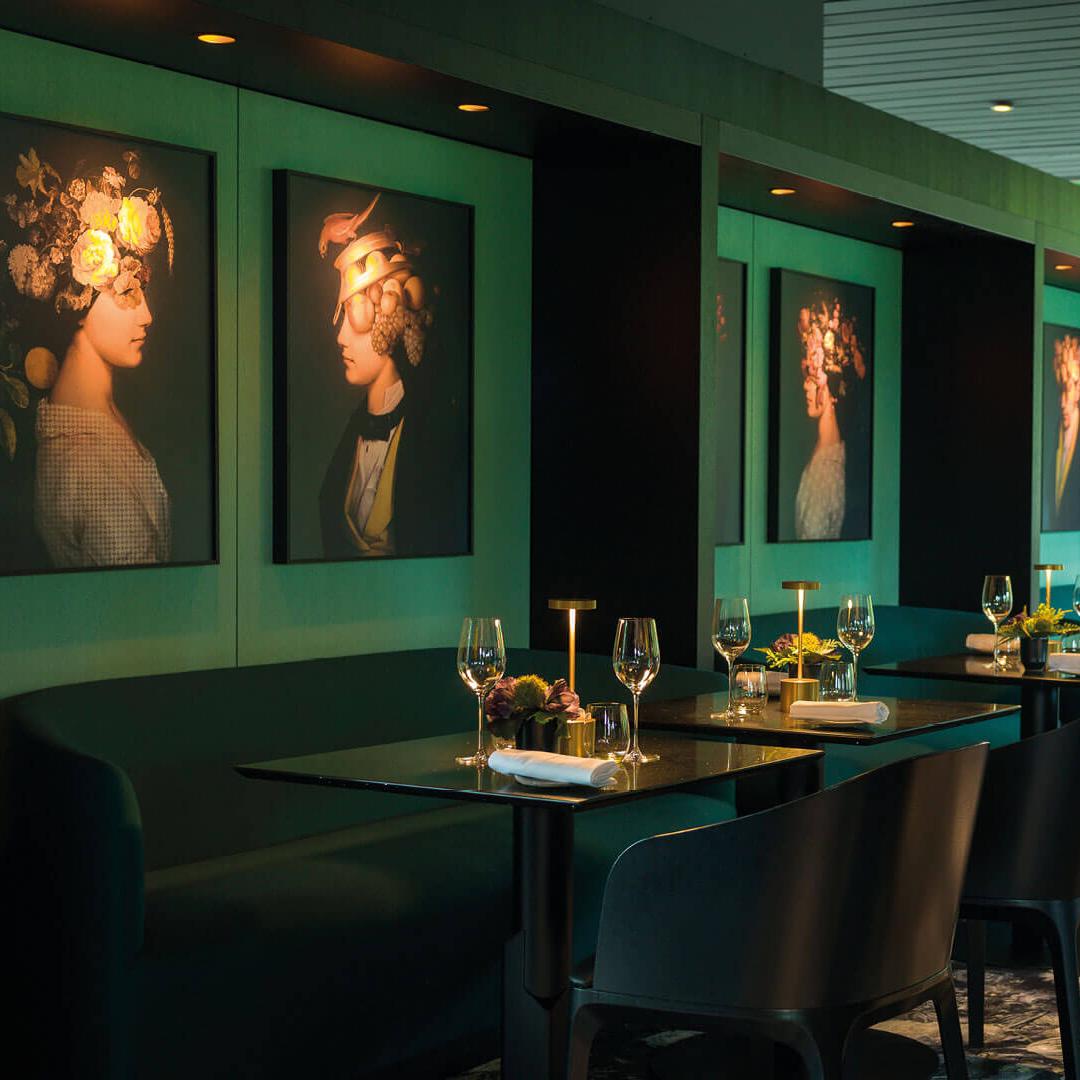
Along the sides of the room, alcoves have been designed to house a series of facing portraits by Rachel Convers, inviting gourmandise and seduction.
To take full advantage of the transparency, all service functions have been concentrated in the centre of the room. Wine cellars, serving furniture, storage units - all unified by a set of sober, refined furniture, made to measure and clad in matt black oak.
Only the cafeteria is covered, for theatrical effect, by the engraving of a huge relief map of the city, reflecting its original function as a tourist office. Vegetation, streets, buildings and the famous loop of the Doubs river are etched into the 5x3 metre wall. This bas-relief, the restaurant's masterpiece, was made entirely in the Ibride workshop, which specialises in engraving techniques.
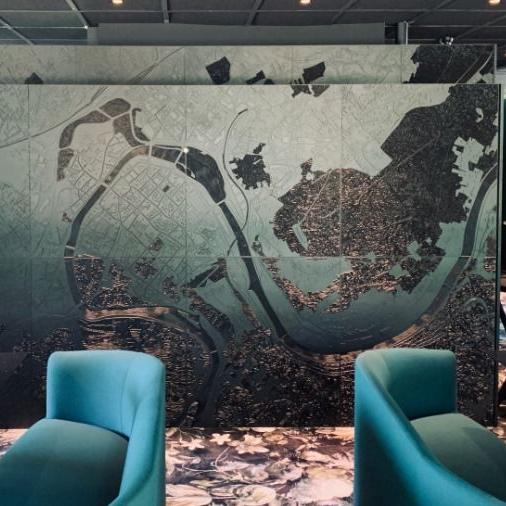
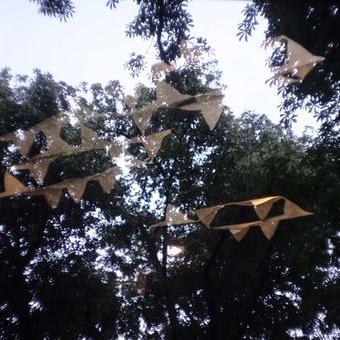
To emphasise the immateriality of the walls, Benoit Convers had fun crossing the room with a flight of brass starlings that fly across the room, reflect in the windows and escape outside. A harmony of greens runs through the interior to reinforce this immersion in nature.
In partnership with La Rochère glassworks, Ibride created a glass panel specially designed for this project. Lacquered deep green on the reverse, it covers the long worktop of the open kitchen. Its machined surface and the depth of the material create bursts of light, ripples and vibrations reminiscent of the nearby river, extending it into the heart of the restaurant.
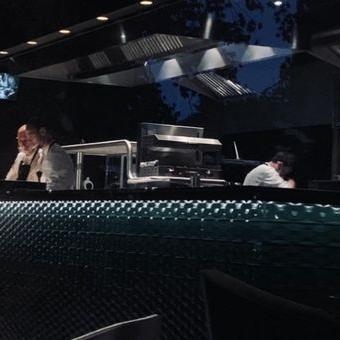
This collaboration with the La Rochère glassworks, a manufacturer with centuries of experience, is emblematic of Ibride's ambitions for interior design projects: to draw on exceptional know-how, to favour precious natural materials and to bring together the best local players to serve the project.
Today, the restaurant is run by Vivien Sonzogni, a young chef who has travelled the world, and Noémie Paris, sommelier and head waiter, both of whom have worked in some of the best restaurants in the world, including Le Caprice in Hong Kong, which has three stars in the Michelin Guide.


